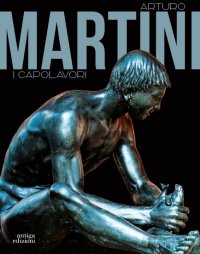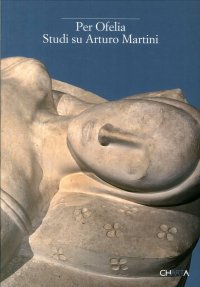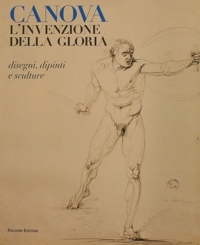Arturo Martini. I capolavori
Treviso, Museo “luigi Bailo”, March 31 - July 30, 2023.
Edited by Stringa Nico and Fabrizio Malachin.
Cornuda, 2023; paperback, pp. 278, col. ill., cm 23x29.
cover price: € 33.00
|
Books included in the offer:
Arturo Martini. I capolavori
Treviso, Museo “luigi Bailo”, March 31 - July 30, 2023.
Edited by Stringa Nico and Fabrizio Malachin.
Cornuda, 2023; paperback, pp. 278, col. ill., cm 23x29.
FREE (cover price: € 33.00)
Studi su Arturo Martini. Per Ofelia
Edited by Matteo Ceriana and Claudia Gian Ferrari.
Milano, Atti del Covegno, 19 maggio 2008.
Milano, 2009; paperback, pp. 136, 97 b/w ill., cm 17x24.
FREE (cover price: € 29.00)
Canova. L'invenzione della gloria. Disegni, dipinti e sculture.
Genova, Palazzo Reale, April 16 - July 24, 2016.
Edited by Giuliana Ericani and Franceasco Leone.
Roma, 2016; paperback, pp. 306, col. ill., col. plates, cm 23x30.
FREE (cover price: € 35.00)
Beato Angelico
Timothy Verdon
Motta 24 ore Cultura
Milano, 2015; bound, pp. 382, 200 col. ill., cm 28x33.
(Grandi Libri d'Arte).
series: Grandi Libri d'Arte
ISBN: 88-6648-233-1 - EAN13: 9788866482338
Subject: Essays (Art or Architecture),Monographs (Painting and Drawing),Painting,Religious Architecture/Art
Period: 1400-1800 (XV-XVIII) Renaissance
Languages: 
Weight: 4.08 kg
There is, indeed, no other way, as the artist's canonization by Pope John Paul II suggests. For, in the absence of detailed information from contemporary sources, and of the miracles normally requested for canonization, the Church accepted Angelico's painted oeuvre as "proof" of his holiness. The volume thus opens with a study on Angelico as a mystic, in which several of his works are analysed from the point of view of iconography and interpretation. A second chapter considers the saintly man as a professional artist in the historical and cultural context of early Quattrocento Florence, while the following sections reconstruct Angelico's stylistic evolution, from the 1420s through his frescoes at San Marco, his chapel for Pope Nicholas V, his Annunciations, eventually attempting a closing summary of the artist's production.











